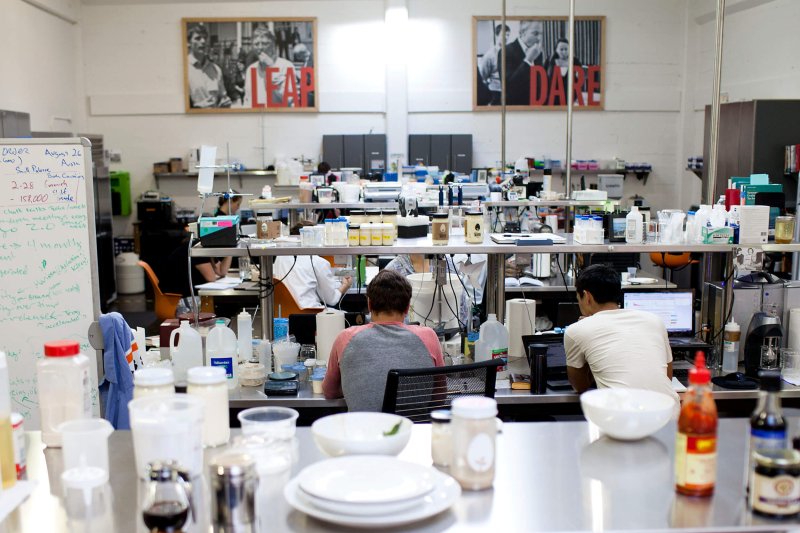Inside a squat building on San Francisco’s 10th Street, packed into a space that looks a lot like a high school chem lab, Hampton Creek is redesigning the food you eat.
Mixing and matching proteins found in the world’s plants, the tiny startup already has created a reasonable facsimile of the chicken egg—an imitation of the morning staple that’s significantly cheaper, safer, and possibly healthier than the real thing—and now it’s working to overhaul other foods in much the same way.
Backed by funding from Microsoft founder Bill Gates and Li Ka-Shing, perhaps the richest man in Asia, Hampton Creek isn’t out to genetically modify your food. Instead, the 63-person startup wants to reconstruct it using what nature already has given us.
Led by Dan Zigmond—who previously served as chief data scientist for YouTube, then Google Maps—this ambitious project aims to accelerate the work of all the biochemists, food scientists, and chefs on the first floor, providing a computer-generated shortcut to what Hampton Creek sees as the future of food.
“We’re looking at the whole process,” Zigmond says of his data team, “trying to figure out what it all means and make better predictions about what is going to happen next.”
The project highlights a movement, spreading through many industries, that seeks to supercharge research and development using the kind of data analysis and manipulation pioneered in the world of computer science, particularly at places like Google and Facebook.
Like Zigmond, Hampton Creek founder and CEO Josh Tetrick believes this kind of work can reinvent our food supply chain and ultimately make us healthier. He was inspired to found the company in part because his father ate so poorly.
“Eggs are just one place to start,” he says. “There’s nothing wrong with the chicken egg necessarily. It’s the system that surrounds most of them. They use a lot of land, a lot of water, and they promote issues like Asian flu.”
The aim is to replace such a system with something that not only promotes good health, but is also less complicated and less expensive.
That begins by examining the behavior of plant proteins at the molecular level and how they interact to create not only certain tastes but textures and behaviors—whether they can duplicate, say, how an egg behaves when you whip it or how it browns when cooked in a pan.
As Gregory Ziegler, a professor of food science at Penn State University, notes, others have worked on somewhat similar efforts for years. But Hampton Creek is taking a far more expansive approach.
“We’re trying to be more comprehensive, more rigorous, more systematic,” Zigmond says. “No one has used data in this way before.”
Read full original article: Forget GMOs. The future of food is data—mountains of it































